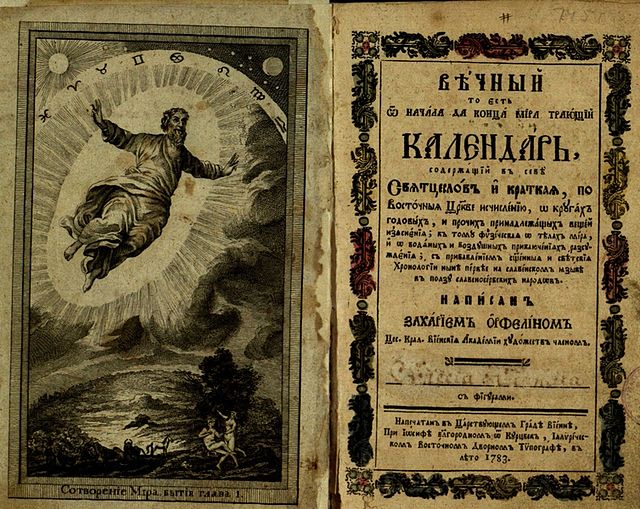Zaharije Orfelin was a Serbian polymath who lived and worked in the Habsburg monarchy and Venice. Considered a Renaissance man, he is variously described as a theologist, scientist, poet, engraver, painter, lexicographer, herbalist, oenologist, historian, publisher and translator.
Saint Lazar, Serbian Great Prince, a copperplate by Orfelin (1773).
The first Serbian magazine by Zaharije Orfelin, published in 1764.
The illustration Creation of the World and the title page of the book Вѣчный калєндарь (Eternal Calendar) by Orfelin, 1783.
Theotokos of Bođani Monastery, Serbia, 1758
Saint Sava, known as the Enlightener, was a Serbian prince and Orthodox monk, the first Archbishop of the autocephalous Serbian Church, the founder of Serbian law, and a diplomat. Sava, born as Rastko Nemanjić, was the youngest son of Serbian Grand Prince Stefan Nemanja, and ruled the appanage of Zachlumia briefly in 1190–92. He then left for Mount Athos, where he became a monk with the name Sava (Sabbas). At Athos he established the monastery of Hilandar, which became one of the most important cultural and religious centres of the Serbian people. In 1219 the Patriarchate exiled in Nicea recognized him as the first Serbian Archbishop, and in the same year he authored the oldest known constitution of Serbia, the Zakonopravilo nomocanon, thus securing full religious and political independence. Sava is regarded as the founder of Serbian medieval literature.
Fresco detail of Saint Sava in Serbian Orthodox Patriarchate of Peć monastery, Serbia
Sava blessing Serb youth, Uroš Predić (1921).
Crowning of Stefan, by Anastas Jovanović.
Fresco in Mileševa.








